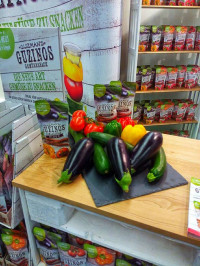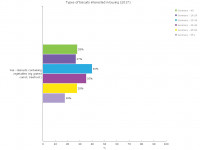Guzman's Guzinos by condacc GmbH , Mintel Group Ltd
Vegetables – a trending ingredient in sweet biscuits?
The demand for biscuits with ingredients that support our health continues to grow. Vegetables are one option for promoting the perceived attributes of snacks, both salty and sweet.
By Dr Jörg Häseler
The importance of plant-based ingredients is rapidly increasing. According to the 2017 Mintel trend report “Power to the Plants”, this is due to “a desire to live healthier and more consciously by prioritising fruits, vegetables, nuts, seeds, herbs and other plant-based ingredients in one’s diet”. Young consumers in particular are jumping aboard the “veggie” train. They generally have a healthier diet and a greater appreciation for preserving the environment than previous generations, so a large proportion of these consumers pursue a plant-based diet.
Germany, for example, registers a potential of around 28 % of adults for vegan-based biscuit innovations. This demographic group expresses keen interest in buying these kinds of products, with the greatest potential for biscuits featuring vegetables as ingredients identified among health-conscious individuals between 25 and 44 years of age.
Health plays a very important role
Vegetables play an outstanding role in the food product and beverage industry and are now being found in increasingly unusual categories. It is particularly notable that vegetables are now appearing in ever more sweet products including yogurt, ice cream, breakfast flakes, baked products and chocolate. In some cases, vegetables are being used instead of fruit because consumers are now taking an increasingly critical view of the sugar content in fruits.
Using vegetables in salty biscuits is an already established practice in Germany. In 2017, vegetables were already flavour carriers in 10 % of all newly introduced salty biscuits, making them the fifth most frequent flavour direction after grains, cheese, spices and herbs. By taking advantage of the consumer interest in superfoods and plant-based nutrition, savoury biscuit producers can use them to experiment with trendy vegetable varieties such as kale, spinach, zucchini or sauerkraut.
In contrast, the role currently played by vegetables in sweet biscuits is still relatively small. In 2017, vegetables were only found in less than 1 % of new sweet biscuits introduced onto the German market. One possible reason for this deficiency in experimentation with sweet baked products could be that strong positioning of the vegetable share on sweet biscuits packaging has a deterrent effect on consumers.
Nevertheless, it can still be anticipated that chiefly young consumers, particularly the more health-conscious among them, are becoming more and more open to vegetables in sweet products. Consumers are searching for simple alternatives for integrating vegetables into their diets. They want to try out new types of products. Many brands across Europe have already recognized this trend and have accordingly introduced sweet biscuits onto the market seasoned with vegetables, including red beet, various types of pumpkin, and also carrots. These biscuits appeal to particularly health-conscious consumers who are on the lookout for healthy snacks but who also want to enjoy a hint of sweetness.•


